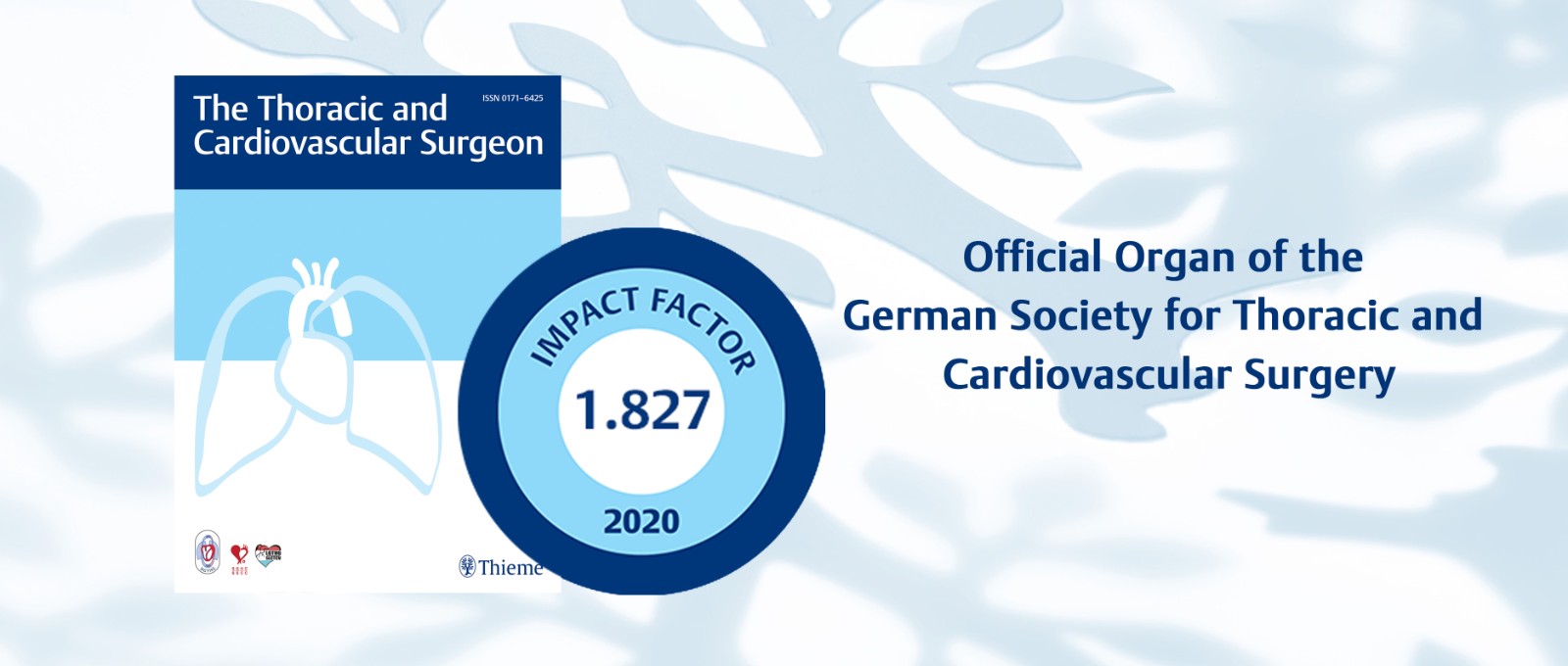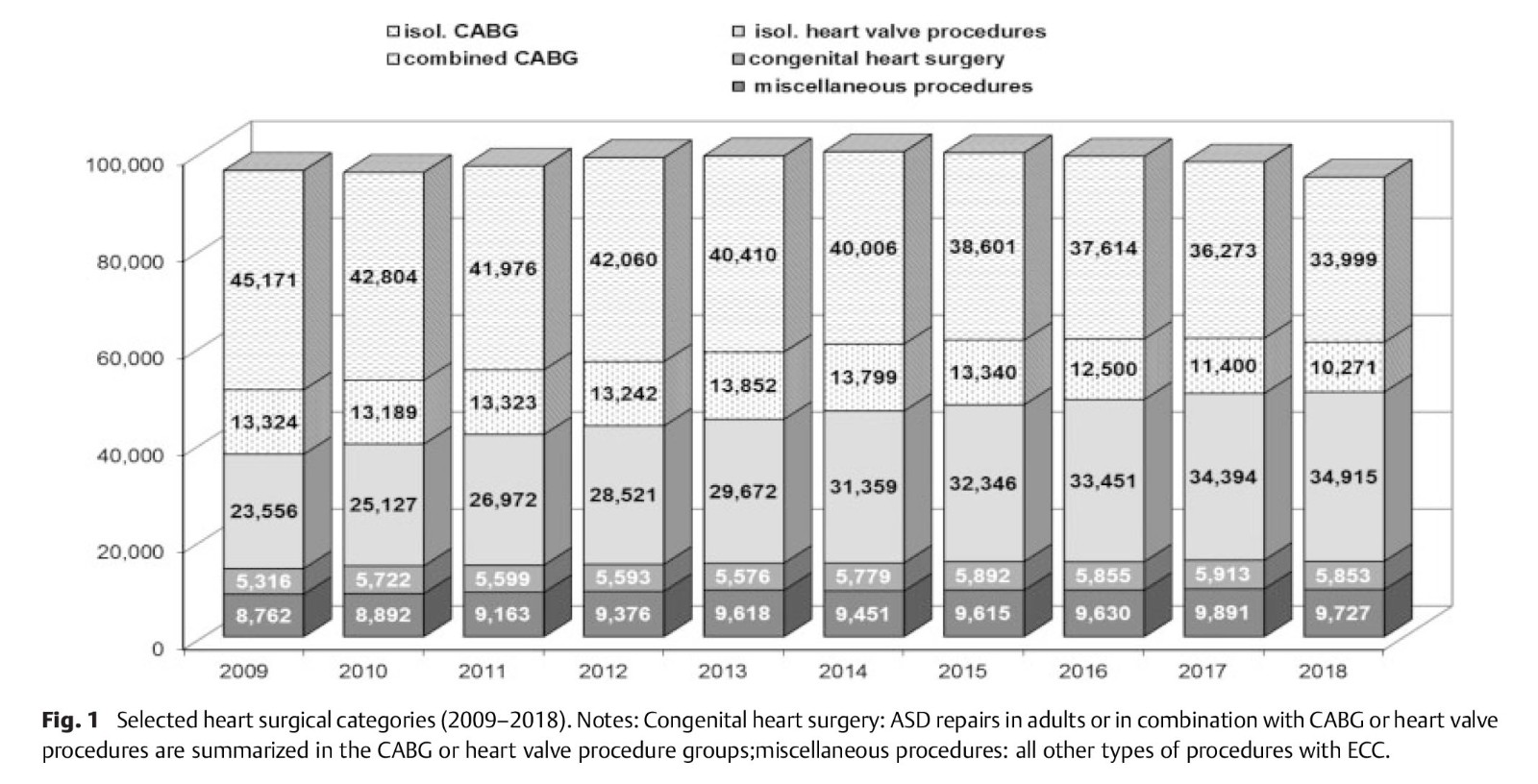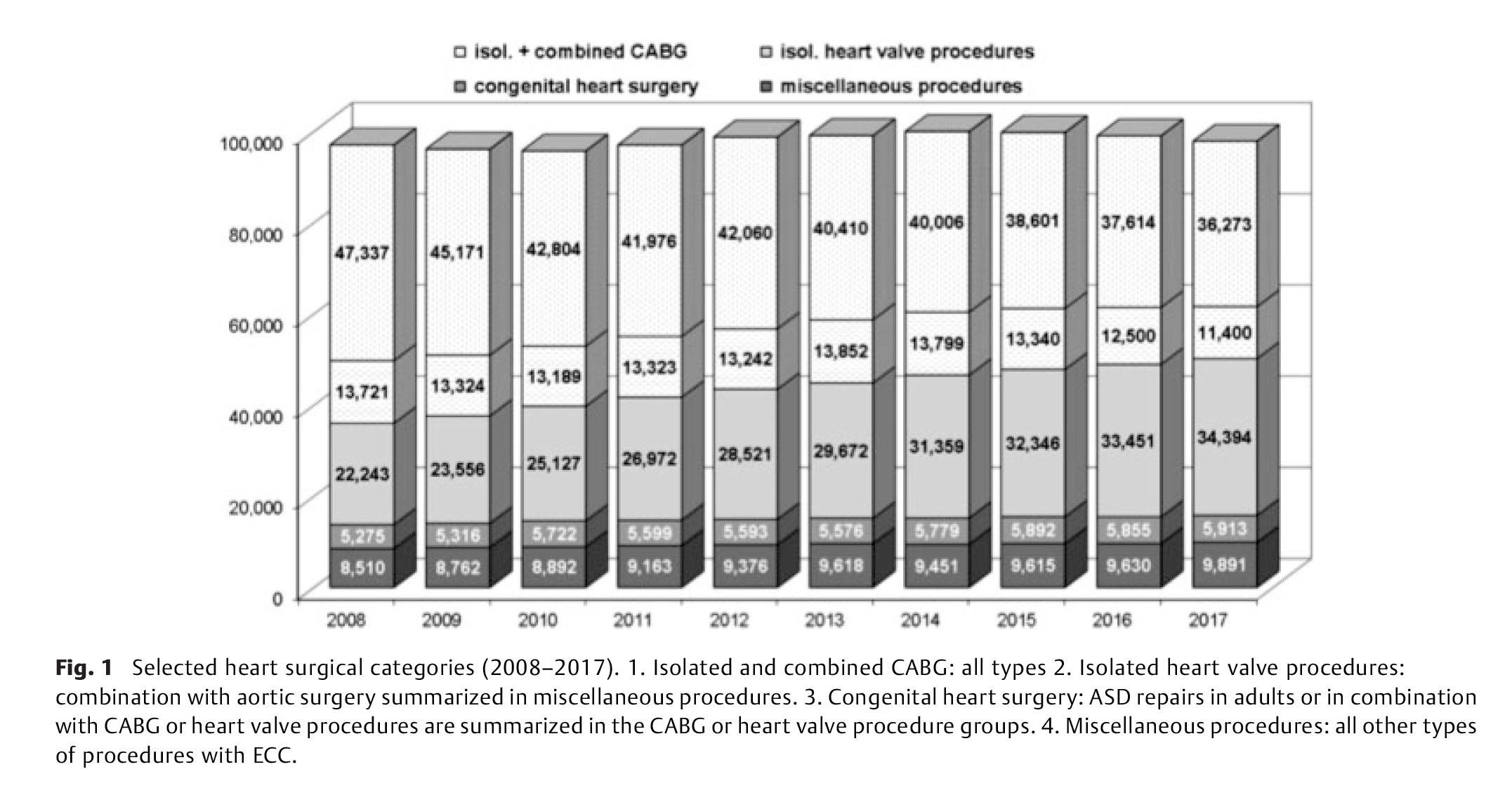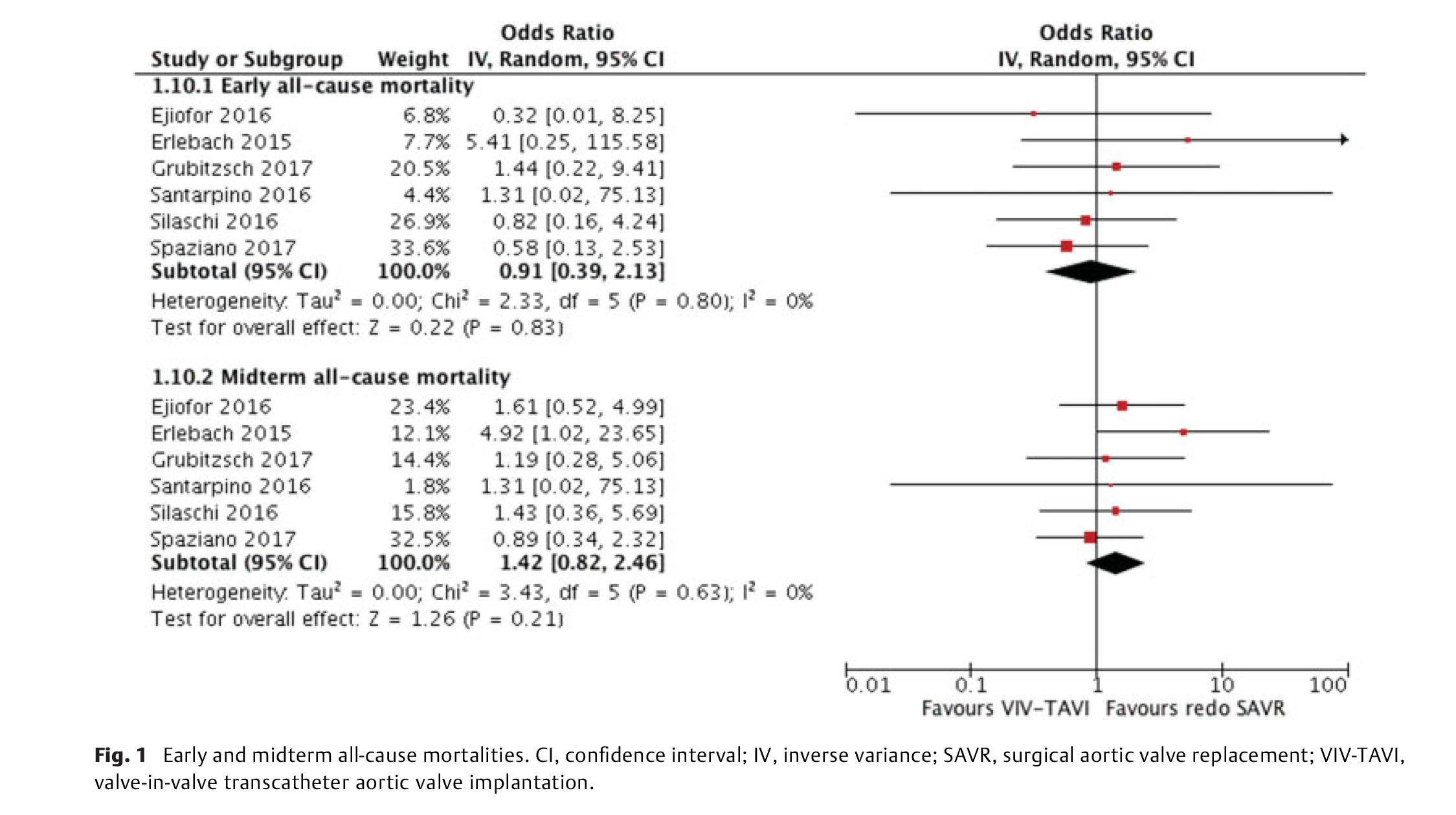

Thieme心脏病学期刊The Thoracic and Cardiovascular Surgeon的影响因子2020提高到了1.827。非常感谢所有作者、审稿人和编辑的支持和最宝贵的贡献。
以下三篇是被引用次数最多的论文,它们对影响因子的提高有着重要贡献,欢迎免费阅读。
Beckmann et al.

Based on a longtime voluntary registry, founded by the German Society for Thoracic and Cardiovascular Surgery (GSTCVS), well-defined data of all cardiac, thoracic, and vascular surgery procedures performed in 78 German heart surgery departments during the year 2018 are analyzed. For this period, a total of 174,902 procedures were submitted to the registry, 98,707 summarized as heart surgery procedures in the classical meaning. The unadjusted in-hospital survival rate for 33,999 isolated coronary artery bypass grafting procedures (relationship on-/off-pump 3.8:1) was 97.1% and for 34,915 isolated heart valve procedures, 14,396 transcatheter interventions included, it was 96.0%. Concerning short- and long-term circulatory supports, a total of 2,871 extracorporeal life support (ECLS)/extracorporeal membrane oxygenation (ECMO) implants, respectively, 942 assist device implantations (L-/R-/BVAD, TAH) were registered. In 2018, the number of isolated heart transplantations increased to 312, a growth of 23% compared with the previous year. The isolated lung transplantations reached 340, a rise of nearly 19%. This annual updated registry of the GSTCVS represents voluntary public reporting by accumulating actual information for nearly all heart surgical procedures in Germany, constitutes advancements in heart medicine, and is a basis for quality management for all participating institutions. In addition, the registry demonstrates that the provision of cardiac surgery in Germany is appropriate and nationwide patient treatment is guaranteed all the time.
Beckmann et al.

Based on a longtime voluntary registry, founded by the German Society for Thoracic and Cardiovascular Surgery (GSTCVS), well-defined data of all cardiac, thoracic, and vascular surgery procedures performed in 78 German heart surgery departments during the year 2017 are analyzed. In 2017, a total of 179,337 procedures were submitted to the registry, and 101,728 were summarized as heart surgery procedures in the narrower sense. About 16.8% of these patients were at least 80 years old, resulting in an increase of 1.1% compared with the data of 2016. The 36,273 isolated coronary artery bypass grafting procedures (relationship on-/off-pump 4.2:1) were associated with an unadjusted in-hospital survival rate of 97.3%. Concerning the 34,394 isolated heart valve procedures (including 12,965 transcatheter interventions), the unadjusted in-hospital survival rate was 96.0%.
This annual updated registry of the GSTCVS represents voluntary public reporting by accumulating actual information for nearly all heart surgical procedures in Germany, describes advancements in heart medicine, and is a basis for in- and external quality assurance for all participating institutions. In addition, the registry demonstrates that the provision of cardiac surgery in Germany is appropriate, and nationwide patient treatment is guaranteed at any time.
Meta-analysis of Valve-in-Valve Transcatheter versus Redo Surgical Aortic Valve Replacement
Takagi et al.

Objective: The objective of this study was to determine whether valve-in-valve transcatheter aortic valve implantation (VIV-TAVI) is associated with better survival than redo surgical aortic valve replacement (SAVR) in patients with degenerated aortic valve bioprostheses, and we performed a meta-analysis of comparative studies.
Methods: To identify all comparative studies of VIV-TAVI versus redo SAVR; MEDLINE, Embase, and the Cochrane Central Register of Controlled Trials were searched through October 2017. For each study, data regarding all-cause mortality in both the VIV-TAVI and redo SAVR groups were used to generate odds ratios (ORs). To assess selection bias, we generated ORs and (standardized) mean differences (MDs) for baseline characteristics. Study-specific estimates were combined in the random-effects model.
Results: Of 446 potentially relevant articles screened initially, 6 reports of retrospective comparative studies enrolling a total of 498 patients were identified. Pooled analyses of baseline characteristics demonstrated no statistically significant differences in the proportion of women, patients with diabetes mellitus, patients with coronary artery disease, and patients with baseline New York Heart Association functional class of ≥III; baseline ejection fraction; and predicted mortality between the VIV-TAVI and redo SAVR groups. Patients in the VIV-TAVI group, however, were significantly older (MD, 4.20 years) and had undergone prior coronary artery bypass grafting more frequently (OR, 2.19) than those in the redo SAVR group. Main pooled analyses demonstrated no statistically significant differences in early (30 days or in-hospital) (OR, 0.91; p = 0.83) and midterm (180 days–3 years) all-cause mortalities (OR, 1.42; p = 0.21) between the VIV-TAVI and redo SAVR groups.
Conclusion: In patients with degenerated aortic valve bioprostheses, especially elderly or high-risk patients, VIV-TAVI could be a safe, feasible alternative to redo SAVR. The lack of randomized data and differences in baseline characteristics in the present analysis emphasize the need for prospective randomized trials.
阅读本刊更多论文,请点击这里。
